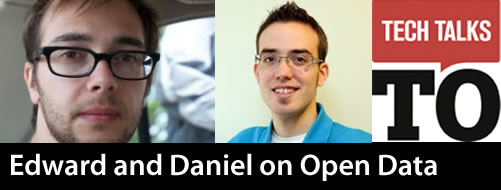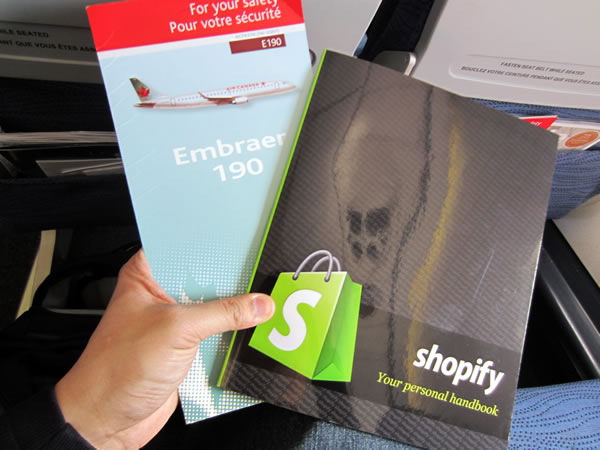
Note: This is a looong article — you might want to get a beverage!
Last Saturday, North America’s largest BarCamp ever took place in Minneapolis: the 6th editon of MinneBar. MinneBar is organized by Minne*, a group of Minnesota-based techies and designers who’ve come together to hold events and build a community. Their mission is to ensure that Minnesota continues to be a great place to have a tech- and/or design-based business.
And the BarCamp Tour is here to help them.
The 2011 BarCamp Tour
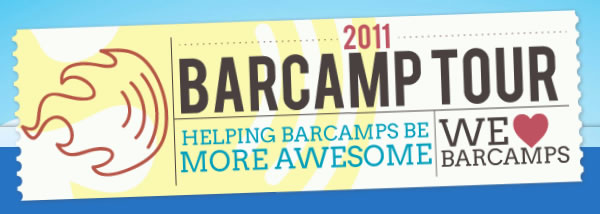
MinneBar is the second city on the 2011 BarCamp Tour, a North America-spanning tour where five entrepreneur-focused startups — Batchblue, Grasshopper, MailChimp, Shopify and Wufoo — travel far and wide to sponsor BarCamps. As our site says, we aren’t your typical sponsors; we don’t simply just write a cheque and paste our logos on the walls: we dive in and help out. Sure, we provide funding, but in order to make the event even better, we help out in all sorts of ways, from leading panel discussions to actively participating in sessions to helping move boxes and haul stuff around and even providing accordion backup for the band at the pre-party! We’re also there to meet people: developers, designers and business types in various cities’ entrepreneur communities.
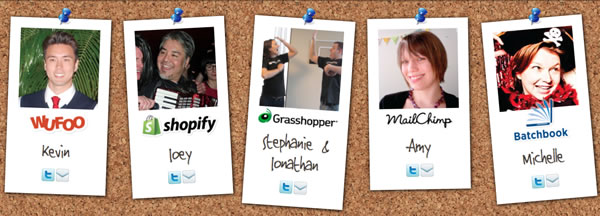
As Shopify’s representative on the tour (all of us are in the picture above), I’ve been to BarCamp Boston (see my earlier writeup for that city) and now, MinneBar. Our next cities on the BarCamp Tour are Portland, Oregon (May 20 – 21) and Seattle (June 25 – 26). There are more coming up after that, and the cities we’ll be visiting next will be determined by you! As we say on the BarCamp Tour site:
We can help your city’s BarCamp. We encourage you to apply to be a part of the BarCamp Tour. Sell us on why your entrepreneurial community is bursting at the seams and we’ll get back to you. If selected, we help you as the BarCamp organizer with some of your biggest pain points, like funding and promotion. We want to help you take your BarCamp to the next level. Oh… did we mention we throw really amazing after parties?
Go ahead, apply! We’d love to come to your city and help make your BarCamp awesome.
Minnebar Pre-Party
The pre-party took place on Friday night at Old Arizona and featured free local draft and the Como Avenue Jug Band, who invited me to join them on accordion. I had my hands full either playing or chatting, so these were the only photos I managed to get:
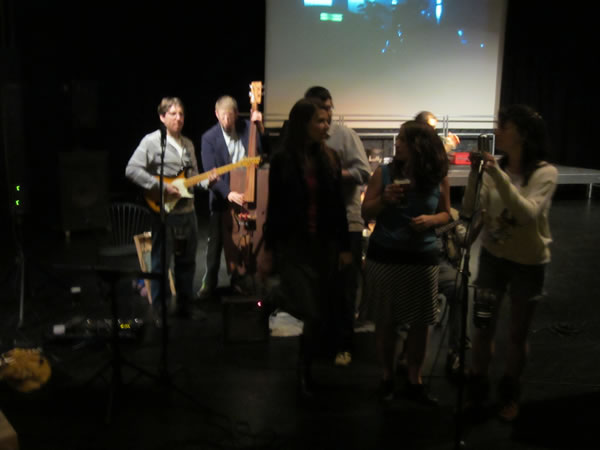
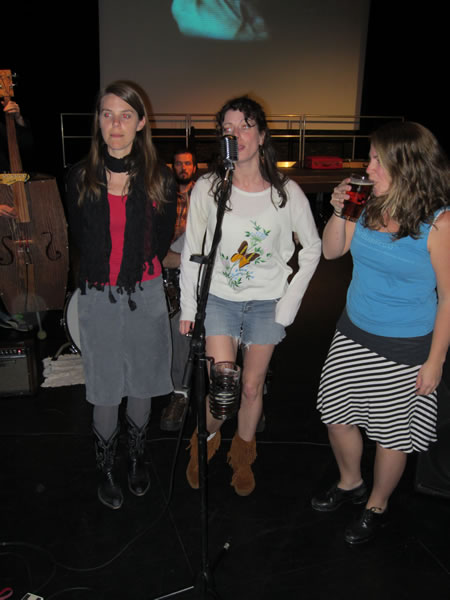
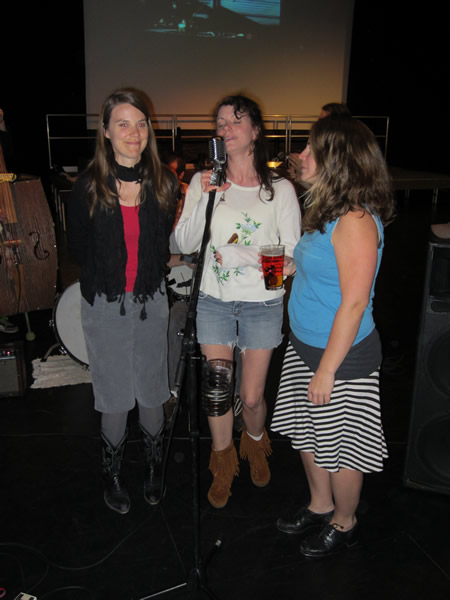
Minnebar Begins
I was stunned when I heard that 1,200 people had registered for Minnebar. Luckily, there’s a venue in the Minneapolis area that’s capable of handling that many people, when gathered en masse or when they break off into different sessions: the corporate headquarters of geeky mega-retailer Best Buy, located in Richfield.
Alas, it’s a place where you can’t pack heat:

It takes a good while to get over 1,000 people into a place, confirm they’re registered and give them their “Hello, my name is…” sticker, unconference schedule and T-shirt:
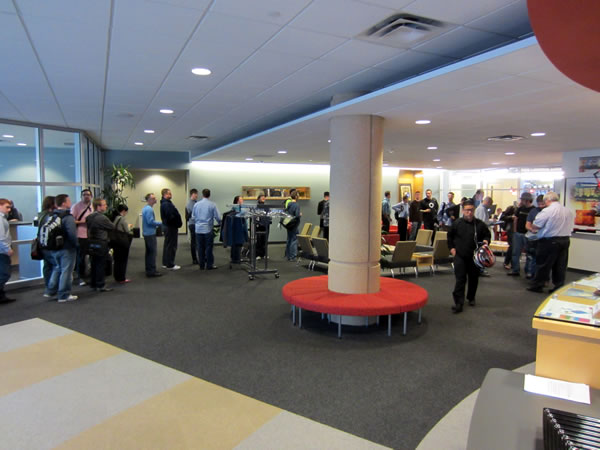
In spite of the large number of people they had to process on the way in, the volunteer staff did so cheerfully, and the intake went rather smoothly.
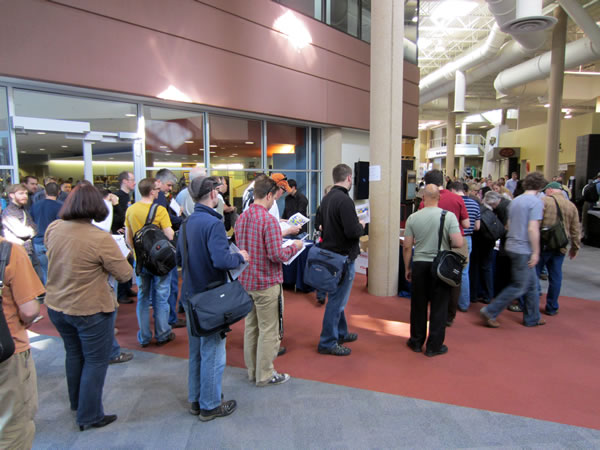
It’s not a tech event without a T-shirt, and MinneBar was most certainly a tech event. The “Early 1960s Pop” look of the design might’ve been something that Don Draper would’ve approved, and it’s got a certain hipster appeal:
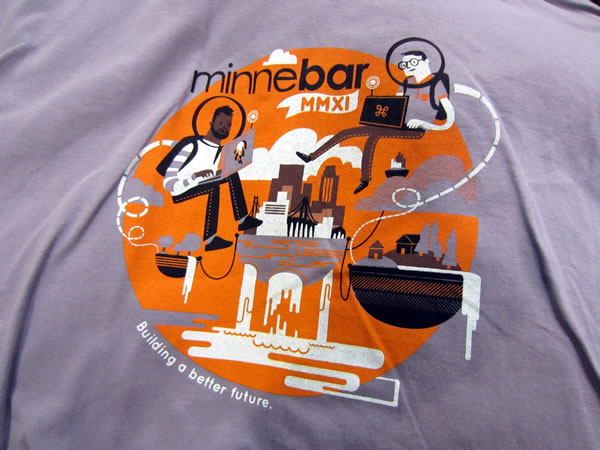
A quick point of information: there is no BarCamp Tour bus, in spite of what the graphics on our site, stickers and the sign below say:
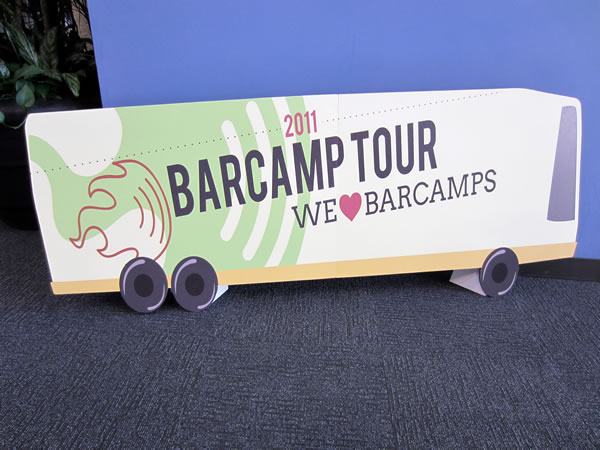
It’s a symbolic bus; we’re not living together on a bus travelling from BarCamp to BarCamp, MTV reality-show style, amusing as that might be (if it ever becomes the case, I want to be our answer to “The Situation“). Between BarCamps, we’re back in our respective cities working away at our jobs.
Hello, Minnesota!
Pictured below are Rob Stephens, CTO of Best Buy (and creator of Geek Squad), and Luke Francl, one of the three people who organized MinneBar. Rob deserves our thanks for opening up Best Buy’s HQ on a Saturday to over a thousand random nerds.
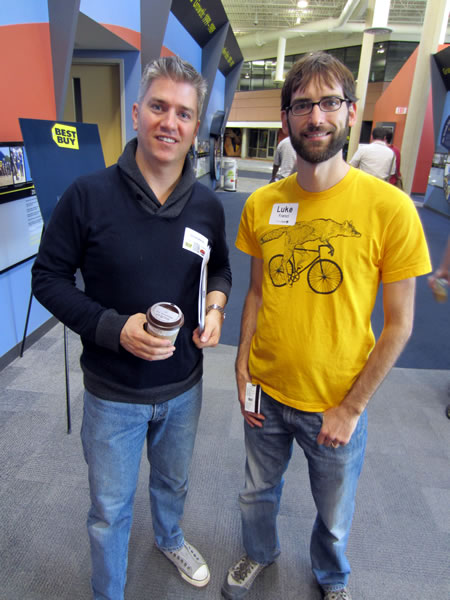
With the lion’s share of the attendees registered, it was time to get the conference rolling with a quick set of opening announcements. They were made by the organizers: Luke, Ben Edwards and Adrienne Pierce:
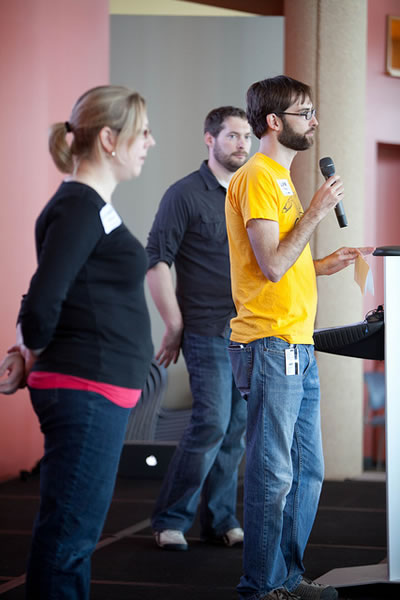
[Creative Commons photo by Jamie Thingelstad]
Everyone gathered for the opening session at Sandy’s Place, the name of the dining hall at Best Buy HQ. Hanging above the tables are a number of postcards in the “Greetings from” style showing the names of various cities, including Original Accordion City:

Adrienne, Ben and Luke were kind enough to thank all the sponsors, both in their opening remarks as well as on the big screen behind them:
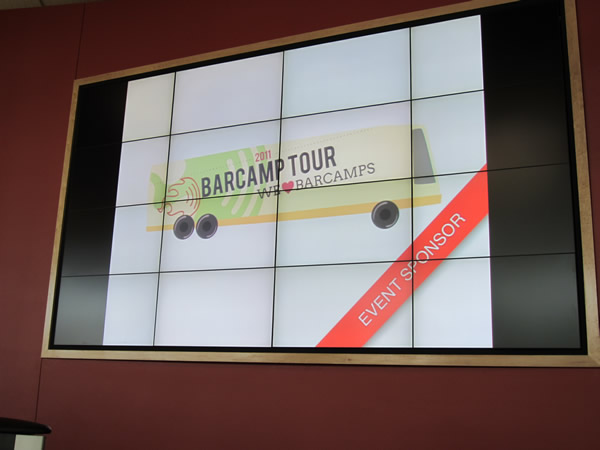
The Sessions
MinneBar deviated from the standard BarCamp formula: all sessions were determined in advance, with pre-specified speakers and topics. This arrangement is closer in spirit to a more standard conference, but the speakers either left plenty of room in their presentations for dialogue or made their sessions more like workshops or open discussions, allowing for more back-and-forth exchanges. People were also free to claim any unused space and start their own sessions, although I didn’t see any central schedule board where people could find out where and when such sessions were taking place.
Since MinneBar took place in a single day and the process of suggesting, vetting and scheduling sessions in a unconference takes the better part of the morning, the decision to use a more standard conference format probably helped buy more time for sessions. The number of people involved may also have been a factor. Still, it would’ve been nice to have some slots open for more unconference-style ad hoc sessions, and Luke said that he’d like to see that at next year’s event.
I spent my time bouncing between sessions in order to get photos as well as a better feel for what this particular city’s BarCamps were like.
One of the first sessions of the day was Six Reasons to Open an “Offline” Store (Especially if You Sell Online) and How to Do It Right, led by Daniel Kent:
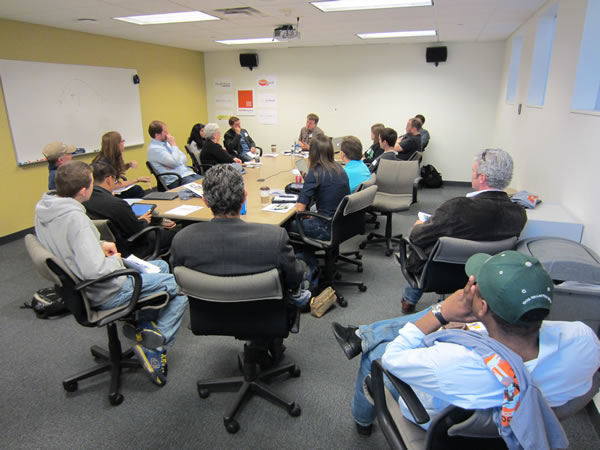
Here are my notes from that session:
- Perceived Risk
- Landlords are giving lots of money to prospective tenants to open physical stores
- And there’s no giving up of ownership to raise funds
- This doesn’t happen online — getting money always means handing over some ownership
- Perceived Barrier to Entry
- The perception is that it’s easy for anyone to set up a site
- It seems to be tougher to set up a physical store
- Competition Management
- You know who your competition is
- Supply Costs
- The more product you move, the lower your costs and the higher your margin
- The Nerdery: online, but they have a robust physical location
- Lets them identify talented people (lower cost and increase results from recruiting)
- Refactor: Recruiting and B2B opportunities
- Different Type of Customer Feedback
- With a site, you can do analytics (doesn’t capture everything) and surveys (low return rate, doesn’t capture everything)
- Offline offers a glimpse into customer reactions that you can’t get online
- Opportunity for Margin
- When I want something online, I don’t care about how pretty the site is; I care only about price
- Offline, it’s not all about price: ambiance, convenient location, condition of goods, harder to leave
- How do you build a relationship with your customers?
- If it’s just tube socks, I’ll go to Amazon and go for price
- If it’s my tea shop, I can do more
- Steepr doesn’t even have a site up yet, but they’ve got 40 people signed up
- Thanks to their Mall of America store
- Potential for using the online store as a way to find locations to own physical stores
- Their model: the place where people want to go
- They have DJs on Friday and Saturday nights
- The 16 – 24 crowd loves to hang out there
- Brick and mortar vs online
- Does having an online presence affect your banking deal?
- Banks see that the site hasn’t made money yet (in progress), cut different deals
The next session I caught was Startup Tools, a review and discussion of software tools that are both free (or relatively cheap) and indispensable to startups, led by Colin Tuggle:
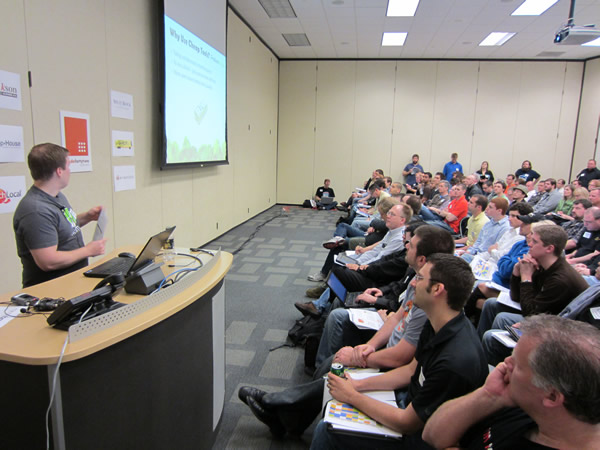
The third session I caught was a panel discussion featuring some of my fellow BarCamp Tour bus-mates (and remember, it’s a symbolic bus) — Amy Ellis, Stephanie Bullis and Michelle Riggle-Ransom, talking about brands in BrandCamp @ BarCamp: Bootstrapping Your Brand…
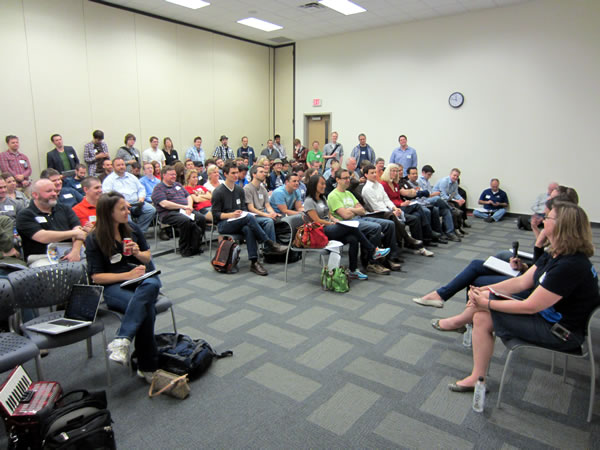
My notes from this session:
- Michelle:
- I wanted to start a family-friendly work/life balance company
- Brand attributes: authentic, transparent, helpful, engaged
- Stephanie:
- There’s no point to stating that trust and reliability are your core values: that should already be built in!
- These are our core values:
- Go above and beyond
- Always be entrepreneurial
- Radically passionate
- Your team
- Amy:
- In the beginning: our brand was based around our mascot, “Freddy von Chimpenheiser” [I had no idea the MailChimp mascot had a name! — Joey]
- Challenge with mascot — many “professional” companies don’t like cute mascots
- Created “Party Pooper Mode”, which turns off the mascot for humour-impaired corporations
- Stephanie:
- Original name of the company was Vmail
- Had to spell it out; everyone thought we were saying “female”
- The “Got Vmail?” slogan was misheard as “Got female?” — sounded like an escort service
- Changed to Grasshopper in 2009
- Sent chocolate-covered Grasshoppers to top 500 influencers, from Chris Brogan to P. Diddy [Joey’s note to Stephanie: He’s called Diddy Dirty Money now.]
- Sent via FedEx to provide sense of urgency
- Included a message along the lines of “You’re an adventurous person, you think big things – now try these chocolate-covered grasshoppers”
- See “Entrepreneurs can change the world” video on YouTube
- Michelle:
- Thinking up a name for the company:
- BatchBlue comes from batch processing
- From Rhode Island – nice tech community – blue is the ocean
- Similar names caused confusion: BatchBook is the product, BatchBlue is the company
- Rolling out a new product without the word “Batch” in it
- Amy:
- Strongly recommend open API; it’s MailChimp’s strength
- They have no outgoing sales department
- Instead, they increase customer base by integrating well with other applications
- Instead of stacking your sales team, build a great API (85% of app functionality is available via their API)!
- Michelle:
- Get all the names: not just the URLs, but also misspelled URLs, Twitter handles, etc.
- Stephanie:
- Even if your idea is in its infancy, get those names before someone else does
- Amy:
- Got malechimp, mailchimpsucks, etc.
- Stephanie:
- To track your brand, you should set up Google alerts
- Not just for your name, but also misspellings!
- Q: Abstract branding vs. clear naming?
- Abstract does not commit you to a market
- “Salesforce? You shouldn’t have to force someone into a sale.”
- Me: “Apple is not about fruit, Microsoft is not about erectile dysfunction”
- Guy: GISrangers: Not many people know what GIS is, and they end up asking “What’s a jizz-ranger?”
- Amy:
- You need a good product to back up your brand
- A brand is more of a feeling…and a hug
- Q: Core Values
- Are you going to have to start worrying about who your customers are? Say, the Klan?
- Amy: Another reason we don’t have a sales team
- Email between members of the KKK — okay, that’s free speech
- Spamming or propagation of hate speech — out
- Q: Casual Brands
- Amy: Our brand worked for the sort of customers we were seeking when we we starting out
- Our tech was better for small companies, not suited for large ones
- That’s changed
- If our company culture doesn’t match what you want, it happens — we’re not the best solution for everyone
- Founders: consultant — hated being reliant on an 80% client and having to compromise their values
- Q: Iterating – easy with tech, harder with a brand
- Stephanie: Sleeker logo – not different
- Based on what they believe their customers will respond to
- Once you get a core base, you can play with the look and feel
- Michelle
- When you make a change, everybody freaks out, then they forget about it
- Don’t be afraid to evolve your brand
- Amy: It’s an opportunity
- Getting customer buy-in helps — let them have sneak peeks
- Have brand evangelists!
- Happy customers are our best sales force
- Putting in a customer rewards program
- Handwritten thank-yous, gifts [thank you economy]
- Make them feel that their input is valuable
- Q: Tactic to make yourself snowball?
- Michelle: Buy coffee for your local chamber of commerce
- Donate time or free product
- Take advantage of the smaller networking opportunities
- Stephanie: Traditional marketing was about reaching out to many to reach one; now you reach out to one to reach many
- Take them out for coffee
- Go out on Twitter: “There’s people out there, and they want to give their opinion”
- You never know where that one conversation will lead
- Amy: Like building the biggest BarCamp, it’s a slow and steady process
- It takes time and legwork, don’t get discouraged
- Ben would buy customers coffee
- Provide value! To customers, to the community
- You can’t hop on Twitter and get thousands of followers
- Work on your product
- Q: Biggest mistakes?
- Michelle: The name thing
- Reined in fights with competitors on Twitter
- Stephanie: Chargify – pricing fiasco with freemium model change: got bad press
- Founder replied with “We messed up”
- Very human about it, explained decision: “No way to be profitable using our current model”
- Got better customers in the end; ditched the free riders
- Lesson learned: don’t do what we did
- Amy: Launched SocialPro last year
- Did not forsee WSJ article on Facebook exposing data (also visible via SocialPro)
- Be human – don’t be defensive, don’t put up a wall
- People like it when you fess up to a mistake
- Q: Employees who project brand?
- Me: Shopify spiel
- Stephanie:
- Hire for fit, train for skill
- Happy people are productive people
- Audience: Company culture at Disney
- Amy:
- Q: Company brand vs Product brand?
- Michelle: You have more than one product
- Stephanie: Product brand: tangible
- Company brand: More about empowering entrepreneurship
- Q: Transition to bigger clients – internal changes? It terrifies us
- Amy: We’re not going from DIY to enterprise
- We do have large companies interested in using us
- Have to tell customers we don’t have account reps, phone support, etc
- Finding larger companies who are willing to do those things themselves
- Q: What was the biggest success with your branding?
- Michelle: Selling to small business web
- Having Google call us and sponsor a panel at SxSW
- Amy: Open, robust, well-documented API
- Stephanie: Support for entrepreneurs
- Got Obama to support National Entrepreneur’s Day
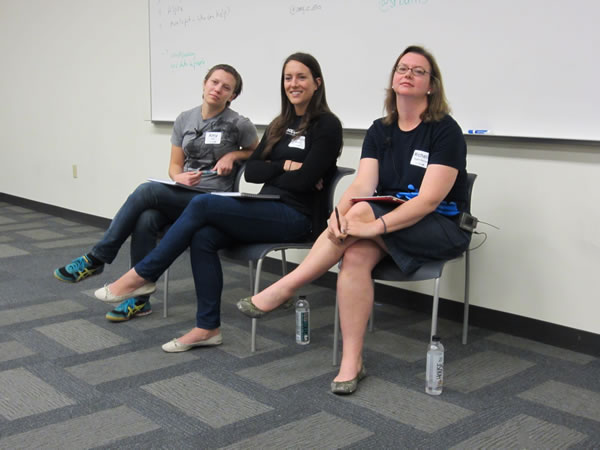
When one of the audience members asked about creating a culture that supports the brand, I stepped in and brought up a couple of points:
- Follow Zappos’ example. At the end of Microsoft’s MIX Conference in March, the Windows Phone 7 “Champs” team (of which I was a member) went to Zappos headquarters for their legendary tour as well as a culture consultation. We started with the tour, which was run by the very enthusiastic members of their culture team, where we saw the day-to-day operations and dynamic. They’re very clearly a group of people who enjoy what they do and care about customer service. Afterwards, we were gathered into a boardroom for a presentation and discussion of starting a great company culture. I told the group that they should pick up Zappos CEO Tony Hsieh’s book Delivering Happiness, and if possible, go to Zappos HQ and get the tour and culture consultation.
- Provide guides. I pointed to the US Air Force’s rules of engagement for social media and Shopify’s employee handbook (pictured here); both are great examples of documents that help shape an organization’s culture. (I’m going to write about the Shopify book in an upcoming post.)
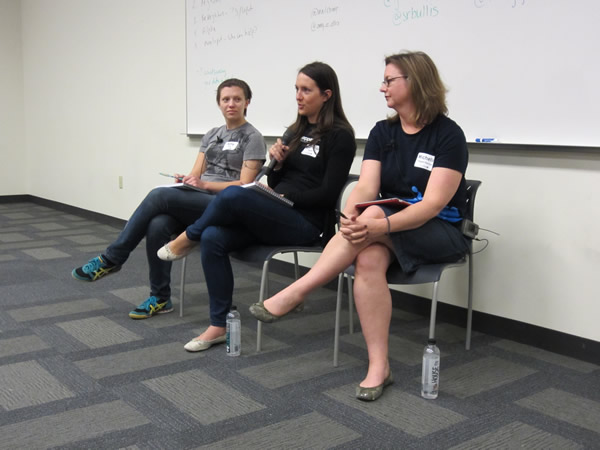
Some of the sessions were in meeting rooms designed for a dozen or so people; others took place in larger amphitheatre-style rooms:
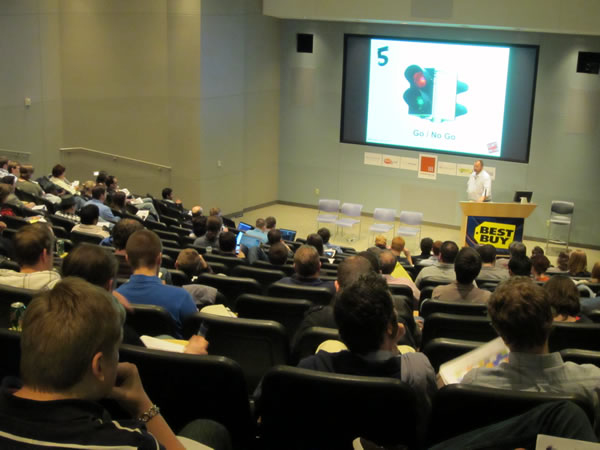
In my last job as a developer evangelist for Microsoft Canada, I did a lot of work promoting Windows Phone 7 to developers, so it’s a topic that’s near and dear to my heart. Besides, I have the only Windows Phone 7-branded accordion in existence! So I made it a point to catch Scott K. Davis’ sesson, Windows Phone 7 – What You Should Know.
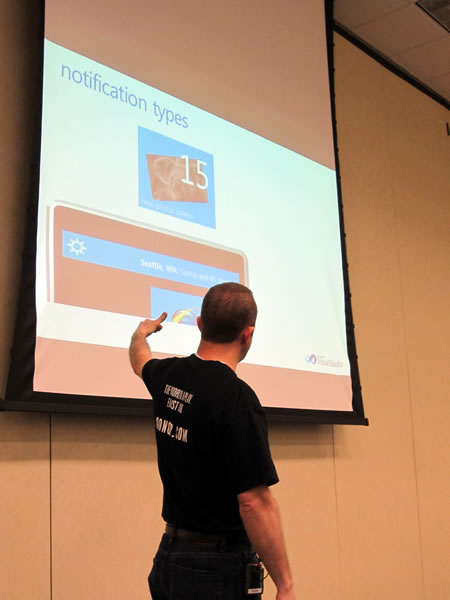
Bonus: we had a Microsoftie in the audience — she works on the testing team for Expression.
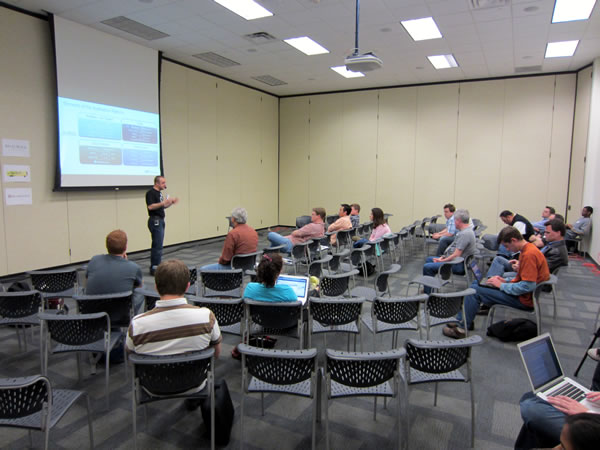
I’ve been in the blogging game for nearly ten years (the 10th anniversary of The Adventures of Accordion Guy in the 21st Century is in November), so I couldn’t resist Joseph Reuter’s session, Why Don’t You Blog More?
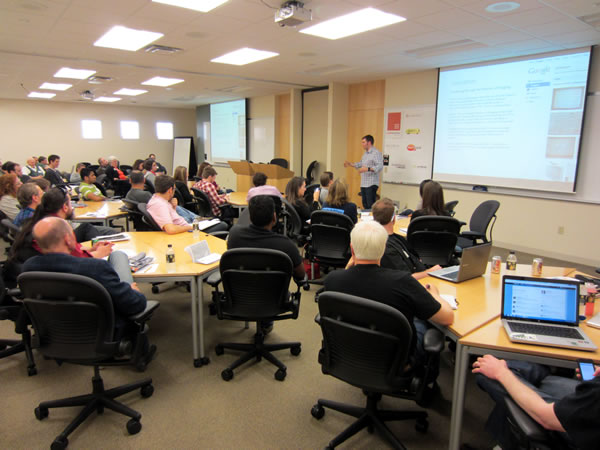
My notes from this session:
- See Clay Shirky’s talk on cognitive surplus — blogging is one such outlet for that surplus
- Publishing has been democratized
- It’s amazing: tons of huge success stories
- Publishing combines content and distribution
- Content: idea and creation (draft, edit, approve)
- Distribution: print and non-print
- In the publishing world, there are editors
- Editors provide, through their vetting, a sense of confidence
- What is blogging for?
- Shooting from the hip – catharisis? “No one’s going to read it, anyway”
- Professional aims
- News releases
- Brand building
- Journaling
- Fun
- No one seems to have been taught how to write
- Content strategy vs. Confidence strategy
- What are you looking to get from blogging?
- Without an aim, it’s likely that you will succumb to your perception of what other people want from you.
- Therefore, successful blogs have a content strategy, or put another way, a confidence strategy
- That strategy may or may not be explicit
- In blogging, sequence does not denote importance
- Bloggers have an edge
- They have access to:
- Information
- Perspective
- Q: People who try blogging and get turned off because it’s just writing?
- Example of Gary Vaynerchuk and video
- Improve the system?
- Problems with distribution:
- Audience size limited by blog visits
- Audience size limited by number of interested visitors who also understand RSS and reading behaviour
- Problems with motivation satisfaction:
- Need others to see what you’re doing
- Dan Ariely: Books, stories and recognition
- Problems with rhythm
- We watch a lot of TV and read news but as an aggregate population, we don’t write
- Hence we don’t have rhythm or tricks or confidence to write
- Problem with time
- Our perception: if we have something to say, it takes too much time to make a blog post bullerproof or ready for public consumption
- Solutions
- Twitter:
- Problem: Blog posts are too long and hard to write
- Solution: Posts are 140 characters, max
- Problem: Jumping around to blofa is hard for readers
- Solution: Twitter has a built-in reader and follower counts
- Posterous:
- Problem: The process of making a post is too hard
- Solution: Posterous championed mailing it in
- Few people willing write for no readers
- Ways forward:
- We read and have opinions – find ways to share them
- We care what other people think – Have a content/confidence strategy
- We care that our work is recognized – find a way to get others to share what they’re thinking when they read your content. Find good analytics software.
- Structure ways to how they are engaging with your content in a way that is meaningful to you. Get those metrics automatically delivered
- Hawthorne effect and blogging
- The single best way to engage with Facebook:
- Comment on other’s people stuff
- Creators need to be commenters, commenters need to be creators
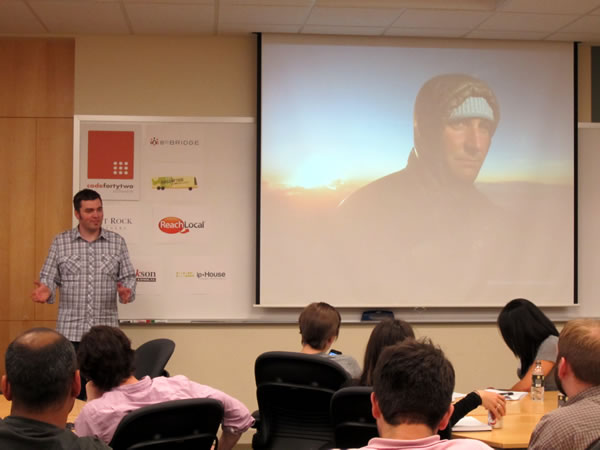
Joseph ended his session with the slide in the photo above: “Who is this guy? What’s his story? Unless he writes it down, we’ll never know.”
The final session I caught was Jeff Lin’s The Missing Web Curriculum: What Every Web Professional Should Have Learned, in which he talked about addressing the disconnect between higher education and real-world web development:
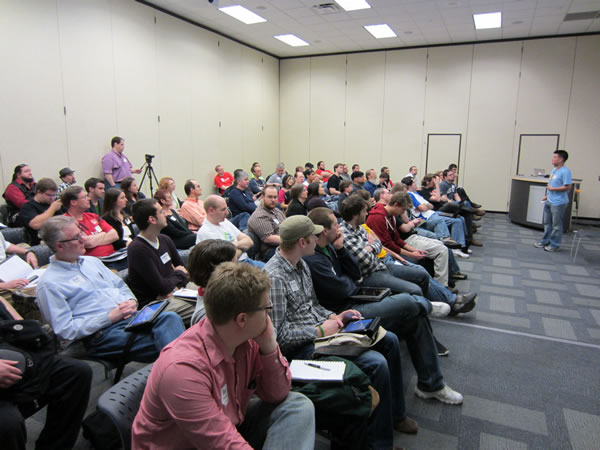
A couple of Jeff’s observations that stuck out for me were:
- “Instead of spending 80 bucks on an outdated textbook, I had the students spend 10 bucks registering a domain name.”
- A poke at Dreamweaver and similar web design tools: “WYSIWYG is short for ‘WhY don’t you juSt learn to write code and stop Wasting Your enerGy on learning bad tools?'”
Post-Minnebar
At the end of the day, we reconvened in Sandy’s Place for closing remarks and copious quantities of Surly Beer. I also worked the room, talking to people about their work, and telling them about having recently joined Shopify.
The organizers decided to get together with some of their friends at Bryant-Lake Bowl and invited me along. That place is many things: hipster diner, bowling alley, fringe theatre and all-round fun place:

We had dinner (that’s a Walleye Po’ Boy pictured below):

Of course, we went bowling:
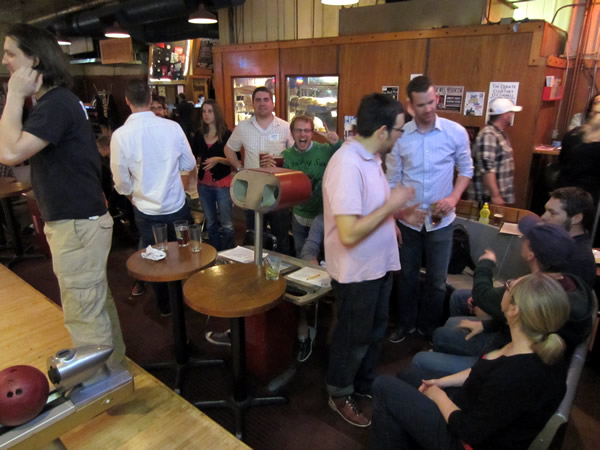
Sharp! Perhaps I should get a pair of these, just for walkin’ around:

Here I am, on my way to a killer spare:

After bowling, I joined Casey Allen and some of his local entrepreneur friends for tasty beverages:
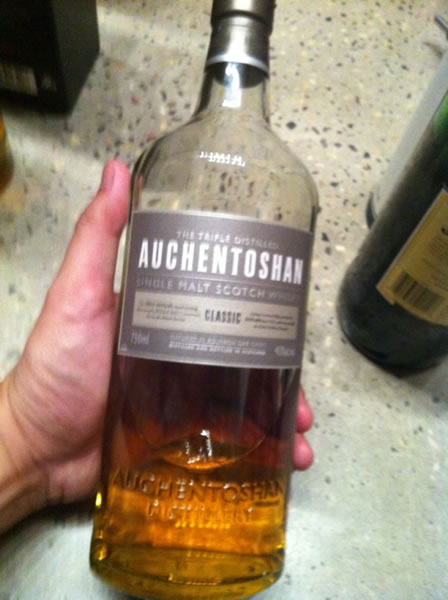
There’s something about whiskey and entrepreneurship — they go together like peanut butter and chocolate, or bacon and everything.
Other Takes on MinneBar
When it comes to tech and design, Minnesota punches well above its weight class, and thus I wasn’t the only one chronicling Minnebar.
A number of sessions were recorded — you’ll find these recordings at The Uptake.
Here are the blog entries and articles on Minnebar that I could find. If you know of one that isn’t in the list below, let me know in the comments and I’ll update it!
- {Minnebar} : Minnesota’s Growing Tech Community [Girl Meets Geek]
- Minnebar (Ra Ra Ra) [David McCrindle]
- Entrepreneurs Discuss the Start-Up Experience at MinneBar [Patent Pending]
- Minnebar 6: 1200 Geeks Strong! [Shareology]
- Latest MinneBar Puts Minnesota Tech on the Map [Tech{dot}MN]
- Minnebar [Ackmann & Dickenson, Inc.]
- Notes from MinneBar 6 [Positive Absorption]
- Exosite at Minnebar [Exosite Blog]
- Minnebar 2011 [Nathan Hein]
- Burned MinneBar 2011 [EventBurn]
- Minnebar 2011 Presentation: Brain-Computer Interfaces [The Edge of Chaos]
- My First #minnebar | Notes from #minnebar: HTML5, CSS3 & Mobile: Responsive Design | Notes from #minnebar: The Others [Jason Stahl]














